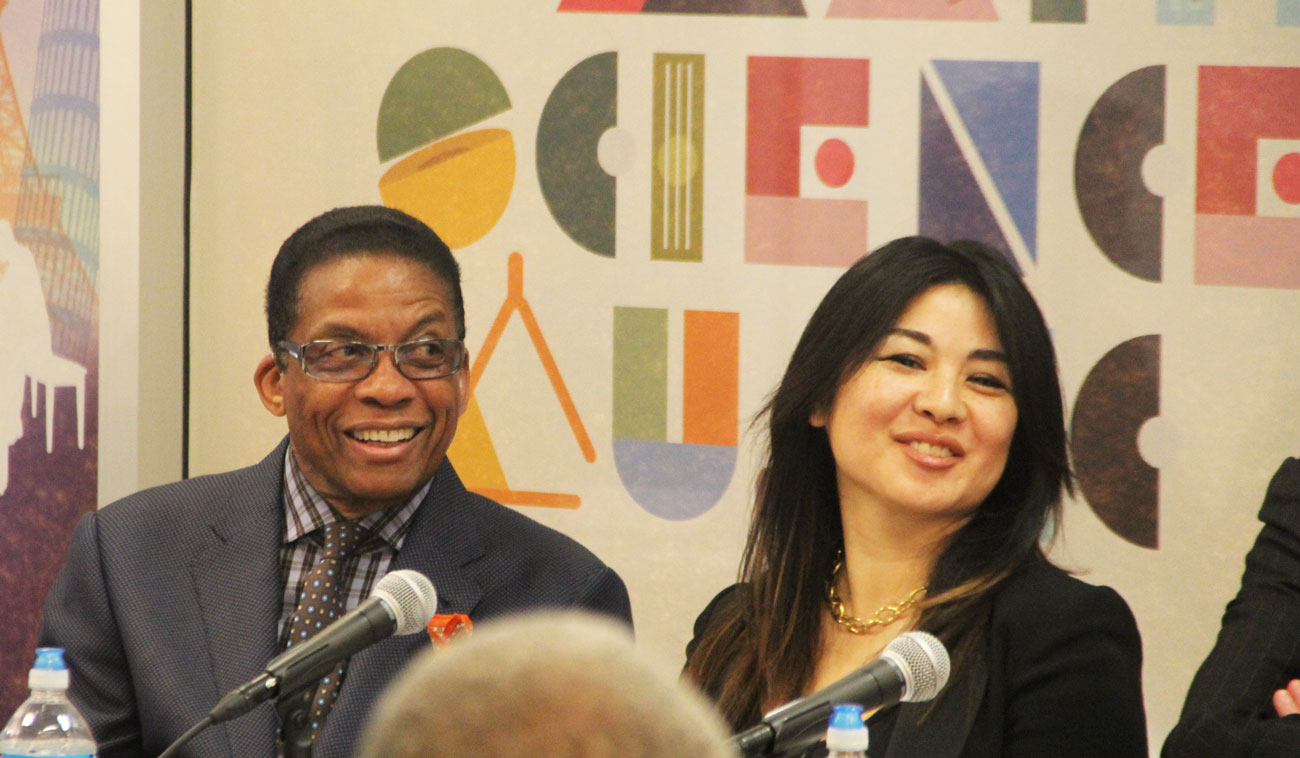WASHINTON–Legendary jazz musician Herbie Hancock thinks American classrooms need a new soundtrack — one that mixes hip-hop and jazz with Pythagoras’ Theorem and exponential functions.
Teachers should be taking advantage of teenagers’ preoccupation with music, Hancock said at the Department of Education Tuesday.
The 76-year-old, Grammy Award-winning pianist joined music, technology and education experts from institutions including New York University to premiere a toolkit of online teaching resources that uses music to teach math and science to students of all ages.
“This is a groundbreaking approach to learning, that will revolutionize the way our young people discover and master essential skills in the fields of science, technology and math,” Hancock said. “Ensuring that our next generation of students are ready and able to make valuable contributions to a world where knowledge of these subjects are a necessity, because their intrinsic principles have become an essential part of our daily lives.”
The “Math, Science & Music” program gives teachers access to digital resources that use beats, grooves and melodies to teach students the mechanisms of math, coding and science.
Alex Ruthmann, associate professor of music education and technology at NYU, said combining the creativity of music with interactive technology is a practical way to engage students who shy away from intimidating concepts.
Ruthman’s team at NYU’s Music Experience Design Lab developed an app in which children can play with the notorious grooves of Michael Jackson and Queen, while simultaneously learning about geometry.
In New York City, more than 100 elementary and secondary schools already have access to innovative, arts-integrated education. Collaborating with Urban Arts Partnership, the city’s largest arts education organization, Ruthmann developed ‘Fresh Ed,’ a program that uses hip-hop to engage students in subjects that seem tedious at first glance.
“In real life, these are not separate disciplines: the math, and the music and the science,” Ruthmann said. “This is an opportunity to highlight how they mutually inform and help each other.”
Secretary of Education John King said there has long been confusion around how to more effectively teach core subjects like math and science. The result has been a wrong-headed conclusion that schools should deemphasize teaching of creative arts.
“That’s exactly backwards,” King said. “The arts are inextricably linked to students’ success across disciplines.”
Hancock, who graduated from Grinnell College in Iowa with degrees in electrical engineering and music and also attended the Manhattan School of Music, said teaching methods need to catch up with how kids experience the world today.
The fact that young people are taking it upon themselves to learn things from YouTube should be an obvious indication of the need to update teaching methods, he said.
“The teaching methods that we have, how old are they? How many hundreds of years old are they?” Hancock asked. “It’s the 21st century … And so we have to do something about re-examining how we’ve been doing things, and find new ways to do things that are commensurate with the world that we live in now, and the one that they will build in the future.”
“When do young people turn music off?” he added. “That’s the thing about it: they use music for everything.”

